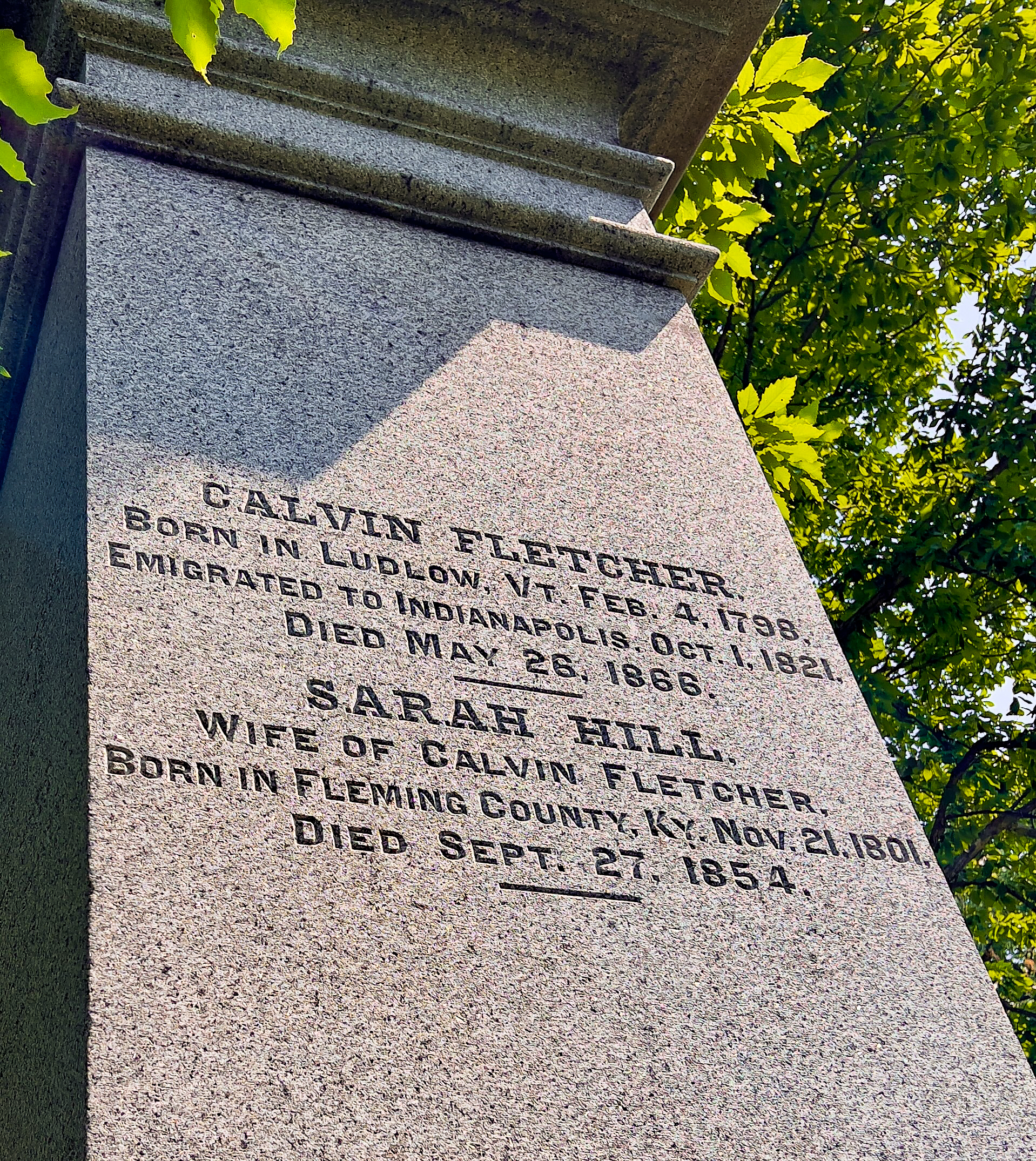Calvin Fletcher
Calvin Fletcher
(February 4, 1798 – May 26, 1866)

Calvin Fletcher was one of the giants in Indianapolis for its first 40 years, and because he left an extensive diary spanning 49 years, he is one of our best windows into the early life of the city. He was born in Ludlow, Vermont, the 11th of 15 children. He left home at age 17 to study law in Urbana, Ohio. Upon hearing that a new capital city was being built in Indiana, he moved to Indianapolis in 1821 and became the first attorney in town.

Fletcher and his new bride, Sarah Hill, made Indianapolis their home where they acquired 450 acres between 1826 and 1830 northeast of town, one of many farms they owned in Marion County. The Fletchers raised eleven children — two daughters and nine sons. Sarah Fletcher died in 1854 and Fletcher remarried Keziah Price Lister in 1855, their mutual friend and children’s teacher. Lister, who had been abandoned by her physician husband, was accomplished in her own right and had been principal of the female department of the Indianapolis High School.
In 1825, Fletcher was appointed the prosecuting attorney for the 5th Circuit Court, a 15-county area, and spent much of his time riding from court to court on horseback, sometimes accompanied by James Whitcomb, who would later become Indiana’s eighth Governor. Fletcher was elected to the Indiana State Senate in 1826 and remained in office for the next seven years. In 1834, he was appointed to help organize the State Bank of Indiana and served as a branch president from 1843-1858. In 1855, Fletcher was a stockholder in the Indianapolis and Bellefontaine Railroad as well as a board member and served briefly as its board president. In 1857, Fletcher founded the Indianapolis Branch Banking Company with Thomas Sharpe. During much of this time, he was also active in real estate, farming, and civic duties.

 On September 12, 1863, Fletcher noted in his diary that he and his son, Stoughton, along with James Ray, met with John Chislett from Pittsburgh, who aided in the selection of a site for Crown Hill. In the next week, Calvin helped procure land for the new cemetery, visiting Quakers Jonathan Wilson and James Trueblood, who each had 40 acres of farmland to sell, and nursery farmer Martin Williams, who owned the 166-acre farm that included the hill of Crown Hill. Calvin and Stoughton Fletcher, along with James Ray, were among Crown Hill’s original 30 Board of Corporators.
On September 12, 1863, Fletcher noted in his diary that he and his son, Stoughton, along with James Ray, met with John Chislett from Pittsburgh, who aided in the selection of a site for Crown Hill. In the next week, Calvin helped procure land for the new cemetery, visiting Quakers Jonathan Wilson and James Trueblood, who each had 40 acres of farmland to sell, and nursery farmer Martin Williams, who owned the 166-acre farm that included the hill of Crown Hill. Calvin and Stoughton Fletcher, along with James Ray, were among Crown Hill’s original 30 Board of Corporators.
Fletcher opposed slavery, and in 1864, promoted the organization of U.S. Colored Troops (USCT) in Indiana in the Civil War, and Indiana’s 28th USCT Regiment used his farm to train.
By the end of his life, Fletcher was one of the wealthiest men in Marion County, among the largest landowners, and the largest single taxpayer in 1865. Fletcher died on May 26, 1866 from injuries he suffered when he had been thrown from a horse two months earlier. In his History of Indianapolis, historian J.P. Dunn reports, “Among those who attended his funeral were a large number of colored people, whose friend he had always been, and who now testified their deep affection and veneration for him” (p. 647). The entire funeral procession was reportedly almost a mile long.
Fletcher’s extensive diaries and letters remain essential sources for study of early Indiana. Published in nine volumes as The Diary of Calvin Fletcher by the Indiana Historical Society, they cover a 49-year period from 1817-1866, describing a wide range of topics as well as information about his personal interests, acquaintances, and community activities. His last entry was made just two weeks before his death.
Buried in Section 7, Lot 4; GPS (39.8207577,-86.1748920)

